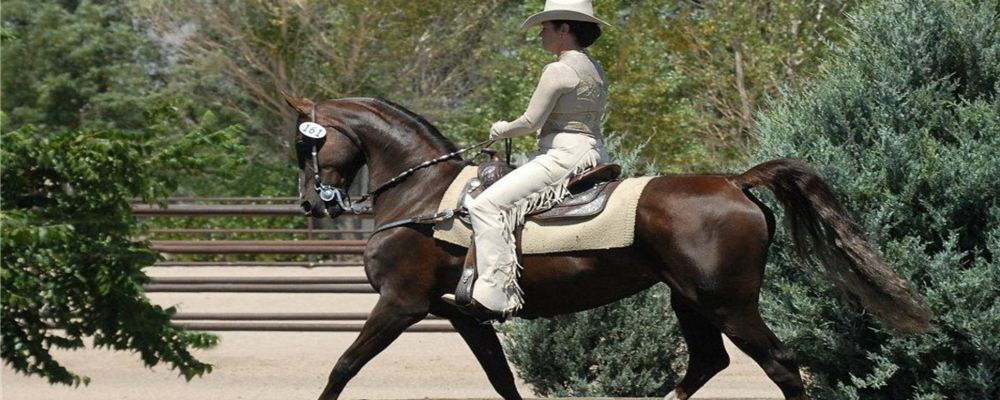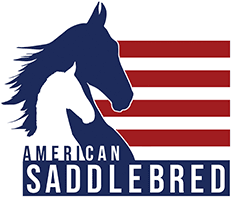
Western Dressage
The American Saddlebred in Western Dressage
With their combination of athleticism, intelligence, and a calm demeanor, American Saddlebreds have naturally found a home in the discipline of Western Dressage. This elegant equestrian sport showcases the precision, agility, and refined movements characteristic of dressage, paired with the traditions of western riding. Two main governing bodies, Cowboy Dressage and Western Dressage Association of America (WDAA), regulate this burgeoning discipline, with the Saddlebred being a popular choice among competitors.
American Saddlebreds possess a unique blend of traits that make them highly suitable for Western Dressage. Their athleticism and flexibility, combined with an innate ability to move with grace and refinement, align perfectly with the requirements of this discipline. Saddlebreds have the capacity to perform lateral movements, collected gaits, and intricate patterns with both fluidity and accuracy, testament to their versatility.
In Cowboy Dressage, the Saddlebreds' calm demeanor, intelligence, and willingness to learn come into play. This branch of Western Dressage stems from the Spanish Vaquero tradition of horsemanship and places a heavy emphasis on the horse-rider relationship, rewarding soft feel, lightness, and harmony. With their inherent trainability and responsiveness, Saddlebreds thrive in Cowboy Dressage, adeptly meeting the discipline's demands for precision, balance, and harmonious communication between horse and rider.
On the other hand, the Western Dressage Association of America promotes a more structured, classical approach to the sport. Here, Saddlebreds demonstrate their ability to perform traditional dressage movements, such as leg yields, shoulder-ins, and half-passes, while maintaining the distinct western style. Their fluid, comfortable gaits and natural carriage make them a pleasure to ride, enabling riders to focus on precision, rhythm, and harmony.
Above all, the Saddlebreds calmness under pressure is a key asset in Western Dressage. Competitions can present an array of challenges, from complicated dressage tests to unfamiliar surroundings, and the ability to remain composed and focused is paramount. Saddlebreds, renowned for their steady temperament, tend to handle these pressures with an admirable level of tranquility.
The American Saddlebred's athleticism, flexibility, refined movements, and calm intelligence make them a superior choice for Western Dressage. Whether competing under Cowboy Dressage's ethos of harmony and soft feel or the Western Dressage Association of America's classical structure, Saddlebreds showcase their ability to adapt and excel. Their inherent attributes highlight why they are cherished participants in this fascinating blend of western tradition and dressage refinement. After all, they are ’The Horse America Made.'
